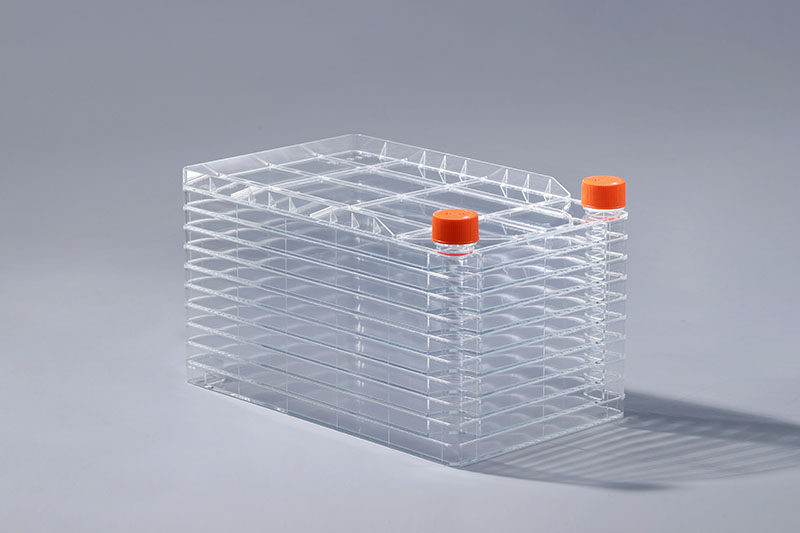je potrošni material za celično kulturo iz polistirenskih (PS) surovin. Sprejema zasnovo večplastne strukture. Skupne specifikacije vključujejo 1 sloj, 2 plasti, 5 plasti, 10 plasti in 40 slojev. Po potrebi prilagodite število slojev. Kateri proizvodni proces se torej uporablja za to posebno strukturo potrošnega materiala?Proces brizganja, ki se uporablja v tovarni celic, večinoma vključuje naslednje korake:cell factory
1. Postopek pred vlivanjem:
Postopek pred ulivanjem je, da se plastični material segreje, prevaža, stisne, striže, zmeša in homogenizira v sodu, da se material preoblikuje iz steklenega stanja v viskozno tekoče stanje, tako da izpolnjujejo zahteve za brizganje.
2. Postopek brizganja:
V fazi brizganja polnjenja polž vbrizga talino v skladiščni komori v votlino skozi šobo, vodilo kalupa in vrata pod potiskom cilindra za vbrizgavanje.
3. Postopek stiskanja in stiskanja:
Nadaljujte z brizganjem, da zapolnite prostornino, ki jo del izprazni zaradi krčenja.
4. Postopek hlajenja in nastavitve:
Po končanem zadrževalnem tlaku so vrata zamrznjena. Artikel se ohladi in strdi.
5. Postopek pobiranja izmeta:
Po tem, ko je bil izdelek nekaj časa ohlajen, ima določeno togost in trdnost. Del se iz brizgalnega kalupa izvrže z ejektorskim zatičem kalupa.
Po končani proizvodnji tovarne celic je treba sestaviti vsak sloj, nato pa lahko zapusti tovarno šele po različnih preizkusih, kot je tesnost in sterilnost. Da bi zagotovili, da se celice lahko bolje oprimejo, je treba ta potrošni material obdelati tudi s TC na površini, da uvedemo hidrofilne faktorje.
After the production of the cell factory is completed, each layer needs to be assembled, and then it can only leave the factory after various tests such as tightness and sterility. In order to ensure that cells can adhere better, this consumable also needs to be treated with TC on the surface to introduce hydrophilic factors.
The FAI climbed 5.9 percent year-on-year in the first 11 months of 2018, quickening from the 5.7-percent growth in Jan-Oct, the National Bureau of Statistics (NBS) said Friday in an online statement.
The key indicator of investment, dubbed a major growth driver, hit the bottom in August and has since started to rebound steadily.
In the face of emerging economic challenges home and abroad, China has stepped up efforts to stabilize investment, in particular rolling out measures to motivate private investors and channel funds into infrastructure.
Friday's data showed private investment, accounting for more than 60 percent of the total FAI, expanded by a brisk 8.7 percent.
NBS spokesperson Mao Shengyong said funds into weak economic links registered rapid increases as investment in environmental protection and agriculture jumped 42 percent and 12.5 percent respectively, much faster than the average.
In breakdown, investment in high-tech and equipment manufacturing remained vigorous with 16.1-percent and 11.6-percent increases respectively in the first 11 months. Infrastructure investment gained 3.7 percent, staying flat. Investment in property development rose 9.7 percent, also unchanged.
 English
English



















































